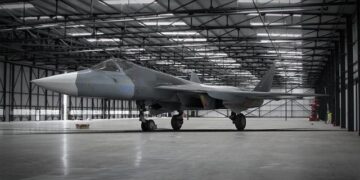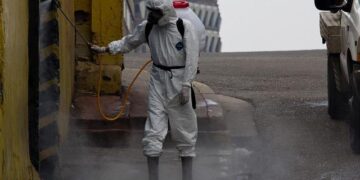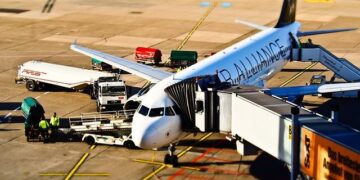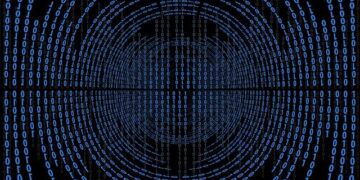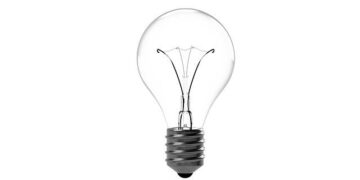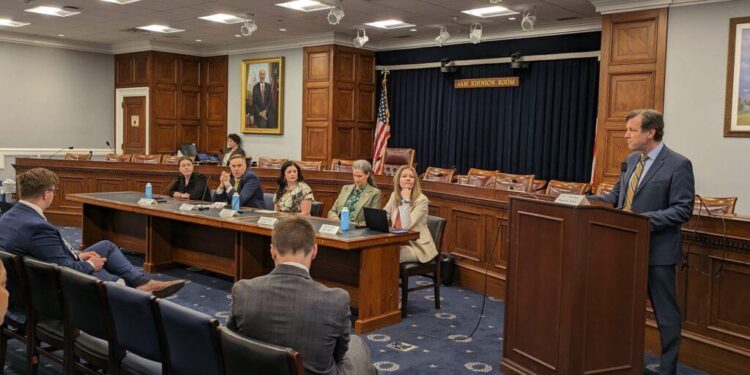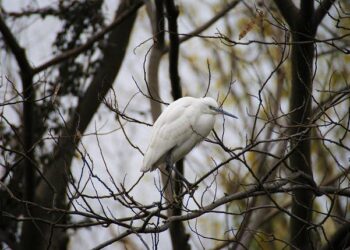Title: Shedding Light on the Unknown: Congressional Briefing on UAP Research with Avi Loeb
In a groundbreaking intersection of science and governance, Harvard astrophysicist Avi Loeb emerged as a key figure during a recent congressional briefing dedicated to Unidentified Aerial Phenomena (UAPs). This event signifies an important milestone in the dialogue between lawmakers and the scientific community regarding unexplained aerial sightings. Known for his bold theories and meticulous scientific methodology, Loeb offered thought-provoking insights that challenge conventional views of UAPs, highlighting their potential implications for national security and the search for extraterrestrial life. As legislators navigate the complexities surrounding this mysterious topic, Loeb’s involvement emphasizes an increasing acknowledgment of the necessity to prioritize scientific exploration in an age where such phenomena often intersect with public interest and governmental responsibility. With fresh discoveries and inquiries surfacing, this briefing aimed to deepen understanding of UAPs’ scientific ramifications, setting the stage for future research endeavors in this largely unexplored domain.
The Scientific Evolution in UAP Research
The recent congressional session focusing on Unidentified Aerial Phenomena (UAP) research featuring esteemed astrophysicist Avi Loeb represents a pivotal shift within this field. Once overlooked, UAPs are now receiving serious consideration from both scientists and policymakers. This evolution indicates a movement towards thorough investigation characterized by several key developments:
- Enhanced Funding: Legislative initiatives are being proposed to secure significant financial resources for UAP research.
- Collaborative Approaches: Encouragement is growing for interdisciplinary cooperation among various scientific domains to achieve a more holistic understanding.
- Pursuit of Transparency: There is increasing demand for greater public access to data related to UAP findings.
This transformation reflects an emerging recognition that studying UAPs should not be limited to fleeting curiosities but rather viewed as potential gateways to profound scientific revelations. As investigations progress, researchers are moving beyond traditional methods by integrating cutting-edge technologies like artificial intelligence and real-time analytics into their work. The table below illustrates some technologies being utilized along with their prospective applications in exploring UAP phenomena:
| Technology | Potential Application |
|---|---|
| Artificial Intelligence | Delineating patterns within reported UAP encounters |
| Real-Time Analytics | Synchronous processing of data from observational tools |
Avi Loeb Calls for Open Dialogue Between Science and Government Entities
Avi Loeb has been outspoken about fostering transparent communication between scientists and government agencies concerning Unidentified Aerial Phenomena (UAP). During his address at the congressional briefing, he stressed that such collaboration is vital not only for advancing knowledge but also for building public trust. Emphasizing transparency in investigations allows informed analysis of data which can enhance adherence to rigorous scientific methodologies within this field. According to Loeb, when researchers collaborate closely with government bodies, they can promote multidisciplinary approaches that may lead us toward groundbreaking discoveries.
Additonally, he advocated establishing structured frameworks that incorporate scientists alongside engineers, policymakers, and community members into discussions surrounding UAP science. By nurturing an environment rich in shared expertise and knowledge exchange, unexpected solutions could arise from these collaborations. He proposed several initiatives aimed at improving mechanisms for data sharing:
- Create an open-access repository dedicated solely to reports on UAP sightings;
- Form collaborative teams comprising both governmental entities as well as independent researchers;
- Cultivate outreach programs designed specifically around educating communities about ongoing studies related to UAPS.
Loeb’s recommendations seek not only demystification but also encourage inquiry over secrecy—laying groundwork toward comprehensive comprehension beyond our current paradigms.
Future Directions For Studying UAPS: An Urgent Call To Action For Interdisciplinary Collaboration
The momentum behind research into Unidentified Aerial Phenomena (UAPS) necessitates adopting interdisciplinary strategies aimed at enhancing our analytical capabilities regarding these occurrences further still! Such methodological shifts will facilitate partnerships bridging gaps across sciences while incorporating technology & humanities alike! By merging disciplines likeastrophysics , psychology , engineering , ethnography , we stand poised offer richer insights addressing complexities inherent within uaps . For instance—a joint effort involving physicists alongside social scientists could yield nuanced interpretations concerning psychological impacts stemming from local cultural responses towards uaps sightings!
Additonally—key stakeholders including governmental organizations educational institutions private sector players must prioritize funding directed towards multidisciplinary uap initiatives ! Establishing dedicated centers focused exclusively upon studying uaps would foster innovation inquiry ! Data-sharing agreements amongst agencies remain crucial building robust repositories evidence collected thus far . Below lies simplified table illustrating possible areas collaboration :
| Field | Potential Contribution < / tr > < /thead > | ||
|---|---|---|---|
| Astrophysics < td >Insights atmospheric phenomena celestial objects .< / td >< tr >< td >Engineering | Advancements detection technologies .< / td >< tr >< td >Psychology | Understanding human perception belief systems linked uaps .< / td >< tr >< td >Ethnography | Cultural interpretations reactions associated sightings . < / td > |

